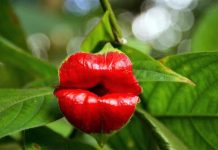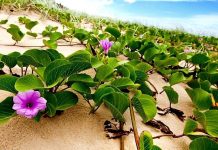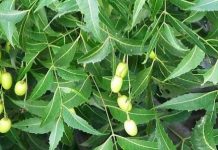Family: Aloaceae
Synonym:Aloe barbadensis Mill.
Bengali/Vernacular name: Ghritokumari, Musabbar, Ghritakanchan.
Tribal name: Dipthi-kanchon (Garo), Kaltru (Murang), Kolatru (Khumi), Chla-doro (Lushai), Kala daru (Rakhaing), Ritakumari (Tanchangya).
English name: Aloe, Aloe vera, Barbados aloe.
Description of the plant: A xerophytic perennial herb, succulent, stem short, thick, triangular or spear-like. Leaves fleshy, mucilaginous, sessile, crowded, numerous, 30-60 cm long, 6-10 cm wide, light green with white blotches, narrowly lanceolate, tapering, spiny-toothed margins. Flowering stalk erect, usually twice the height of the plant;flowers 2-3 cm long, yellow.Fruit a capsule, somewhat elongated.
Plant parts used: Leaf.
Herbal uses:Juice extractedfrom theleavesof the plant mixed with milkis used for the treatment ofdysentery and pains in the kidney.
Leaves of the plant are used to treat herpes simplex, sores, tendinitis, dandruff, menstrual cramps, acne, psoriasis, stomatitis, varicose veins, warts, and haemorrhoids.
The mucilaginous substance collected from the leaves of the plant, after adding some sugar it is taken thrice a day (25 ml amount each time) for three weeks to treat spermatorrhoea.
Fresh juice extracted from the leaves of the plant is applied to skin burns, scalds, sunburns, and wounds to treat it.
Leaf juice is used to control diabetes.
For the treatment ofconjunctivitis, leaf juice is applied to the outer eyelid.
The mucillaginous substance separated from the leaves of the plant is applied to the infected skin twice a day for three days to treat eczema.
A fresh juice extracted from the leaves of the plant, after warming it is taken twice a day (two tea spoons amount each time) for one week to treat constipation.
For alopecia and falling hair, remove the spines, cut leaves and rub directly to the scalp.
The leaves of the plant are used for the treatment of flatulence, facial paralysis, gynecological disease, impotence, menopause, piles, andrheumatism.
Distribution: It is cultivated commercially in the northern districts and also in many gardens as ornamental and medicinal plants.
Is this plant misidentified? If yes, please tell us….















… [Trackback]
[…] Info on that Topic: natureinfo.com.bd/aloe-vera-l-burm-f/ […]